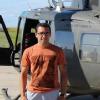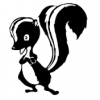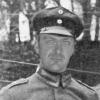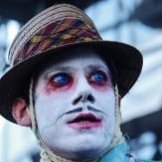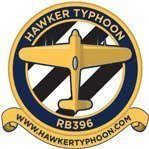Search the Community
Showing results for tags 'Eduard'.
-
M-2 Machine Guns 1:72 Eduard Brassin The Browning M2 Machine gun, sometimes called the Browning .50 Calibre, or nicknamed the Ma Deuce was designed by John Browning toward the end of WWI. It was based on the already successful Browning M1919 gun which used the 30.06 round. As it used the .5 inch round it is referred to as a heavy machine gun. Over the years the weapon has been used by the Army in the ground role, the USAAF and later the USAF in aircraft. It has also been used by many other countries as well. The gun is still being produced today and now stands as the longest produced gun in the US inventory after the Colt .45 ACP Hang Gun (also designed by John Browning!). The guns themselves are cast in resin and will need careful handling as the barrels are extremely thin. They can be configured as those in the aircraft wings, or those in the aircraft themselves by the addition of the photo-etched parts. Conclusion These parts should enhance any kit where the M-2 gun is seen. Highly Recommended. Review sample courtesy of
-
Hi! This is my Supermarine Spitfire Mk.IX - 1/48 Eduard finished yesterday. The model is built from Eduard production, the battery compartment has been made of foil. Enjoy! The model was built for the contest. You can watch the results and add your vote on Greenmats Club http://bit.ly/27PZ2t2
- 11 replies
-
- 30
-

-
Hi fellow modellers! Iwould like to introduce you my recently completed Cessna A-37B Dragonfly. This is a simple and straightforward kit to build. It has some fitting problems, but that´s fine. I added some Eduard PE to add a nice touch on the details. The only problem with this kit are the decals.... the worst i have ever used. i tried to improve them by painting over the silvering they left. I hope you like it and every comment is welcomed! Best regards form Uruguay. Ignacio
- 17 replies
-
- 31
-

-
Please help me, I'm lost! I need to get a king tiger before I go mad. I've been inspired by PlaStix to build a king tiger (tiger II) but I am not sure which kit and aftermarket parts to go for. Should I go with the Eduard kit and PE/resin or Tamiya and PE/resin? So let your wisdom guide me!
- 12 replies
-
- tamiya
- king tiger
- (and 4 more)
-
GBU-12 LGB's 1:32 Eduard Brassin This set contains four complete GBU-12 LGB's. Each one consists of the body, tail assembly, four separate fore-planes and a choice of two different styles of seeker head. Construction is pretty simple, but the will be some drilling involved, on top of the usual removal of the moulding blocks and associated cleaning up. With the body removed from the moulding block you will need to drill a recess in the end with a 6mm drill, followed bu some shaping of the indentations. Eduard have provided a pair of etched brass templates for this task. The tail is then attached followed by the fore-planes are then fitted. Each of the seeker heads also require a hole to be drilled into the base, and a template has also been provided. With the hole drilled, the head unit can be fitted to the spiky end of the body and drooped accordingly. Painting is simple, consisting of olive drab overall, with just he fore-plane section of the body painted brown, on top of which you add the supplied decals, using the painting guide on the instructions for location. Review sample courtesy of
-
Hi folks,this is my final build for the Edgar tribute GB and a couple of firsts for me,first Eduard Spitfire and first time I,ve ever finished one in USAAF colours.this the instructions tell me was an early Mk ix flown by 1st Lt. Leonard.V.Helton of the 52nd fighter group 4th fighter squadron.A superb kit as expected it's been good to compare this with Airfix's equally good Vb as I built both at the same time,this one,s more "over" engineered in places but presented no issues apart from a short shot main canopy as can be seen in the WIP.http://www.britmodeller.com/forums/index.php?/topic/235001265-eduard-usaaf-mkix/page-1 Thanks for looking in. And a final shot of all three.
-
After posting my first build on this forum, I've now got quite a taste for it. So after rummaging through the stash list I ended up with about four choices; 1. Tamiya F-84G 2. AMK L-29 3. Kittyhawk F-35A 4. Airfix Gnat After a while I found that I kept coming back to Eduard's Silver Arrow edition of the MiG-21. I've been slowly adding the missing sprues and etch so that I can build all three versions eventually, and it was whilst doing the original sort out that I realised that there were a couple of important parts missing. These were very kindly replaced by Eduard themselves. So, on with the show. The box top art is carried over onto both instruction booklets. This is the scheme chosen. Just as a side note, could someone please translate the boxes at the top for me. A wild guess, but is the first one the mix for the interior colour? The build has started and the first thing on the agenda was to wash all the sprues in warm, soapy water. This was left to dry over night and then everything was sprayed with Halfords grey primer. Some areas were then assembled such as the cockpit and main wheel well. The cockpit area was then sprayed with MIG.223 Turquoise Green. Then the green areas such as the tail, wheel hubs, recon pod, nose cone and parts of the exhaust area were sprayed Tamiya XF-5. Another first for during a build was adding some rivet detail. I'm hoping this will come into its own at the weathering stage for paint chipping. First impressions of the kit are that its light years ahead of my previous build. This kit just seems to fall together with a lot of the seams just disappearing. And thats before any glue! One thing I'm stuck on though is the colour for the wheel bays. There's nothing mentioned at all in the instructions. I normally use Tamiya XF-23 but I understand things are little different for Czech MiGs. Any pointers would be greatly appreciated. Cheers, and thanks for reading.
-
Hi everyone My Spitfire build is coming to an end so its time to think about my next project. I do have a Hurricane,Typhoon and Jet Provost to finish but I've wanted to build a Halifax for a long time now so I thought sod it, lets go for it! I've chosen the Revell offering as my starting point, I know it has its issues (hence the correction set from AML) but hopefully I should be able to produce a decent model to add to my small collection. Here's an overall shot of the Kit and after market... Thanks for looking and see you soon. Iain
-
WGr.21 Rockets for Fw 190 1:72 Eduard Brassin The Werfer-Granate 21 rocket launcher, also known as the BR 21 was introduced in 1943 and was the first rocket used by the Luftwaffe. These rockets enabled fighters to engage box formations of heavy bombers beyond the range of their defensive armament. There is also reported use of them against ground targets. These were modified from infantry 21 cm Nebelwerfer 42 projectiles. This set from Eduard provides two launching tubes for their new tool Fw 190 kits. The set provides, two tubes, two rockets, and two rocket heads. The heads are used to make the tubes appear loaded while the full size rockets provide diorama projectiles. Photo-etch provided the rocket ends, tube ends, and the mounting struts. In what is cleaver engineering from Eduard first they provide a PE template which shows you where to drill the holes for the mounting struts. Following this the 4 struts each side are attached to a PE plate. The struts bend down and the whole plate attaches inside the main wing. The upside is that the modeller does not have to attach 4 small struts each side; the downside is they must be attached before the main wing is closed up. Conclusion These parts should enhance the already great Eduard Fw 190. Highly Recommended. Review sample courtesy of
-
Hi everybody. I finished this one a while ago. Proud to say it was published in Meng Air modeller no.62. Enjoy the pics and Happy new year to all of you. (Photos taken by my friend Aleš D.)
-
Hi folks. I finished it earlier in the year but I've only just got round to photographing it. I'd categorise this kit as a sanity build as it is a very simple airframe to assemble. Click fit and very easy to build otherwise. Paints are Gunze and decals are from the kit (East German Air Force). The only addition is the Eduard fabric seatbelts. I'm not conivnced by these yet. The only gripe I'd have with the kit is the number of stencils on it. You wouldn't know looking at it but they number over 100. Anyway, hope you like it. Cheers, Mick
- 11 replies
-
- 29
-

-
- MiG-21PF
- East Germany
-
(and 3 more)
Tagged with:
-
Hi guys Here is my entry for the tribute to Edgar Brooks Spitfire STGB here on Britmodeller. I haven't built a Spitfire since I was a kid as its not my usual subject area but I picked up the Eduard Mk.XVI for a few reasons. (1) The box art just screamed buy me with a beautiful picture of the scheme I have modelled here. How many times have we all done that. The Spitfire is a plane that has been built to death by modellers in the standard camoflage schemes but the NMF just looks great on her and I couldn't resist. (2)I worked at Farnborough (now airport for business jets) for nearly 4 years in one of the old hangers that quite possibly could have housed these back in the day. (3) Being a member of Farnborough IPMS model club it was the only choice. The Eduard Spitfire is a beautiful kit that was a pure joy to put together. One of those kits that just fell together and probably the best fitting kit I have built in a few years. Painting wise I used AK's Xtreme metals for the first time and it worked flawlessly. Any minor issues I had with it were my own making. The Roundels and reg stencils were sprayed using Miracle Paint Masks which I am very impressed with. Unfortunately It is very difficult to photograph inside the cockpit but there are shots in the WIP HERE. A bit picture heavy. DSC_6796 by Mark Inman, on Flickr DSC_6777 by Mark Inman, on Flickr DSC_6779 by Mark Inman, on Flickr DSC_6782 by Mark Inman, on Flickr DSC_6785 by Mark Inman, on Flickr DSC_6786 by Mark Inman, on Flickr DSC_6790 by Mark Inman, on Flickr DSC_6791 by Mark Inman, on Flickr DSC_6797 by Mark Inman, on Flickr DSC_6798 by Mark Inman, on Flickr DSC_6803 by Mark Inman, on Flickr DSC_6804 by Mark Inman, on Flickr Thanks for looking.
- 34 replies
-
- 38
-

-
Hi folk's,I mulled over whether to go for a third entry in this GB but finally after having this kit in my hand a dozen times over the last few months decided there's time to build it and American operated Spitfires is an area new to me,I love the scheme with it,s mix of US and RAF markings and desert scheme which will weather nicely.I have read rave reviews on Eduard's Spitfires and seen some superb builds of the various types even in this very GB I,m halfway through a weekend Hellcat and posted the Airacobra recently both hassle free and very buildable kits,I will start her after the weekend as the Airfix Vb is progressing nicely.here,s a review of this kit on Hyperscale. http://www.hyperscale.com/2014/reviews/kits/eduard84137reviewbf_1.htm
-
After I finished the Hawkeye of VAW-124 a while ago, I picked up the Eduard Su-22M3 Fitter limited edition again. This kit is based on the old Kopro kit and not that sharp and crispy as we are used to lately. But Eduard put some extra's in the box like PE for the cockpit, a brasin seat and lots of nice decals. Nevertheless I had to do some mods. The majors are: The inside of the exhaust was reworked; Flaps were dropped; Slats were reworked and dropped; Eduard AA-2 Atolls were added; Airco on the canopy frame was added. The model represents one of the two Fitters that were shot down on the morning of 19 August 1981 over the Sidra Bay by two Tomcats of VF-41. There is not too many reference on the Fitters available. Every aspect of the two Tomcats is widely available, on the other hand, we know the two Libyan pilots ejected and they fired one Atoll, and thats about it. So there was room for some guesswork. Hope you like.
- 20 replies
-
- 44
-

-
Hi folks a stalled build from a while ago was Eduard's weekend boxing of the 109e,my take on the captured machine evaluated by the British after being captured by the French in 1939 it later went to the States and lost in an accident in 1942.Eduard's kit is a little beauty with just a couple of over engineered area's.Airfix decal's from the old club kit.If ypu check out photo's of the real aircraft it seems to have a non standard centre section of the cockpit glazing maybe damaged when the aircraft was captured. Thanks for looking in.
-
Fw 190A-8 Standard Wings 1:72 Eduard Weekend Edition The Focke-Wulf Fw190 was designed by Kurt Tank in the late 1930s. His aim was to create a fighter that was not only fast and agile, but also reliable. It had a wide track undercarriage to improve ground handling and also utilised electric rather than hydraulic controls to reduce the risk of system loss in combat. The Fw190 also marked a departure from aircraft like the Bf109 and Spitfire as it combined a 14 cylinder radial engine with a development of the NACA cowling system. This choice was crucial as it meant that the Fw190 would not create additional demand for DB 601 liquid cooled engines. It also allowed a low drag profile for such a powerful engine. Despite early teething problems, the Fw190 first entered operational service over France in August 1941. It proved to be quite a shock for the RAF whose 1440hp Spitfire Mk.V, the best fighter available at the time, was outclassed in terms of firepower and all round performance, particularly at lower and medium altitudes. The Fw190A-8 was the ultimate evolution of the radial-engined fw190s and entered service in 1944. It featured improvements such as extra fuel, improved armour and nearly 2000hp output with emergency boost. The Kit As sure as night follows day in the world of Eduard Kits following on from the Royal, Profipack and standard boxing's; the Weekend Edition will be along soon. These new Fw 190 kits from Eduard are setting a new standard in 1.72 for excellence. The kit itself is made up of 92 plastic parts spread across of two sprues of dark blue-grey plastic and a single clear sprue with the now-familiar circular layout. The instruction book is a glossy, stapled booklet with full-colour painting diagrams. All together, the impression is of a quality package, at the great weekend price point. The quality of the plastic parts is second to none. The mouldings are clean and crisp and there are no traces of flash and no sink marks. The surface detail on the outside of the airframe comprises recessed panel lines and delicately engraved rivet and fastener detail. It looks absolutely superb. Eduard haven't skimped on the detail elsewhere, with sub-assemblies such as the cockpit being up there with high end resin items when it comes to the quality and quantity of detail. The cockpit is made up of over thirty parts (including photo etched details), which is a truly phenomenal for a kit of this size. Once assembled, the whole thing can be sandwiched inside the fuselage halves along with the firewall and the basic-but-good-enough-in-this-scale engine face. Setting the semi-completed fuselage to one side for a moment, construction turns to the wing. The lower wing is moulded as a single span, to which the main spar (which also forms the rear wall of the main landing gear bays) must be added. The other parts which form the structures and details of the landing gear bays must be added at this point, prior to everything being fixed in place by the addition of the upper wing surfaces. The ailerons are moulded separately to the rest of the wing, which opens up some possibilities for the diorama builder, as well as enhancing the level of realism. Turning back to the fuselage, the rudder is also moulded as a separate part, although the tail planes are solid lumps. In common with other kits of the type, the upper fuselage forward of the cockpit is moulded separately (in this case as two parts with a third for the cannon barrels). Once the basic airframe is together, its time to fit the undercarriage and other finishing details. Each of the main gear legs is made up of two parts, although you have the option of removing the plastic torque links and replacing them with photo etched versions. The wheels themselves are made up of nicely moulded tyres and separate hubs. This should make painting them much easier. Ordnance is taken care of with a drop tank and a single bomb, along with the associated racks and shackles. There are a number of small parts included to cover the final details, including the aileron balance weights and various aerials and antennae. The canopy deserves a special mention as there are four rear sections included; blown and unblown, with different parts for closed and open options. Two propellers are included as well, although only one is needed for the included options. Decals There is one small sheet of stencil decals and one for the aircraft markings. As seems to be standard now decal options are provided for two aircraft: Fw 190A-8 of 2./JG 54, Lt. Hans Dortenmann, Villacoublay, France, June 1944. Fw 190A-8 of 12./JG 5, Herdia Airfield, Norway 1945. Each option is illustrated with a four-view profile as well as detailed illustrations of the propellers or drop tanks where appropriate. Conclusion It is good to see this great kit now released as a weekend edition. Highly recommended. Review sample courtesy of
-
F6F-5N Nightfighter 1:72 Eduard Weekend Edition With the success of the F6F-3 already in service, the F6F-5 was the natural evolution based on combat experience. Key improvements in the F6F-5 were a more powerful engine utilising a water injection system, revised windscreen that had a single armoured windscreen and spring loaded aileron tabs. The night fighter version came into service in the fall of 1944 was designated the F6F-5N and this was easily identified by the wing mounted AN/APS-6 Radar protruding forwards from the starboard leading edge. The British designated the Night fighter version as the Hellcat NF II. My respect goes out to these pilots. Flying a single engined aircraft over the sea at night must be quite an intimidating experience, let alone the prospect of combat mixed in. The Kit The original kit was released by Eduard back in 2011, and has been re-released in different boxes periodically over this time. Now it is in a light grey plastic and the moulds are wearing well with crisp finely moulded parts. The kit featuring fine engraved panel lines. There are three main sprues of the grey plastic, and one clear sprue. Construction starts where else but in the cockpit. The rear bulkhead and right side panels are attached to the cockpit floor. The main instrument panel is made up and then attached to the cockpit floor as well, along with the control column and pilots seat. Seatbelts are provided in this kit as decals. Once the seat is on the left hand side panel can be installed and to finish of the cockpit the rudder pedals are attached. The cockpit assembly can then be inserted in to the fuselage and the main fuselage closed up. Before this is done remember to add the tail wheel part and a panel under the cockpit. The flashed over tab hole for the external tank must also be opened up at this time. Construction then moves to the wings, these are of conventional upper & lower parts each side. Before they are closed u the holes in the outboard lower wings for rockets must be closed up, and the insert for the main guns must be added in. Once assembled the wings along with the one part tailplanes can be added to the main fuselage. The modeller then moves to the front of the aircraft. The engine cowling is made up as is the 5 part engine. The engine is attached to the front of the main fuselage and the cowling added. The first decal option provides for a slightly different main gun arrangement and these can now be added. Next up for construction are the wheels. These are of two part construction being the main wheel and separate hub. When complete these are attached to the main leg, and the main gear door is attached to the outside of the leg. The centre line tank is constructed, and then this and the main landing gear can be attached to the main airframe. The night fighter radar unit is then attached to the starboard wing, and the propeller is added to the front. Lastly the canopy parts are added. These can be posed in either the open, or closed position. Decals As usual now for the weekend editions Eduard provide two decal options. Both aircraft are overall Gloss Sea Blue which white markings. The decals are from Eduard and look like they will pose no problems; F6F-5N, NuNo,78669. Maj Brue Porter Commanding Officer VMF(N)-542, Yontan Airfield, Okinawa 1945. F6F-5N, VMF-511, USS Block Island, 1945. Conclusion It is good to see this excellent kit re-released in a weekend edition. Highly recommended. Review sample courtesy of
-
F-4J Phantom Update Sets 1:48Eduard - For Academy kit The Academy F-4 series are great kits in their own right, even in today's world of ever expanding mould quality there are areas in which resin still provides extra detail. Exhausts These three part resin and two part PE exhausts really do pop with the detail. Wheels The resin wheels do pop with detail you just dont see o the kit parts. Overall these new parts from Eduard do provide an advancement over the kit parts. Highly recommended. Review samples courtesy of
-
Hawk T.1 for Revell Kit 1:72 Eduard The new Revell Hawk as reviewed here is a good kit in its own right, now Eduard have followed up with a PE update set. This arrives as one nickel fret and one brass fret. The frets provide details for The Ejection Seats (including belts), all instrument & side panels, Jet pipe, undercarriage doors, undercarriage bay parts, wing fences, smoke pipes for the Red Arrows, fuselage plates, and canopy fittings. Conclusion These parts should enhance an already good kit. Recommended. Review sample courtesy of
-
Hello, First, excuse me for my mistake english, i am writing from France. I want to build the Cpt Arthur Roy Brown’s plane. Brown who is a possible candidate to have involved in the Manfred Von Richtofen’s death. Here are the photograph of the men and the plane (find on the net) : « Rentrons dans le vif du sujet » !, Here is the work i made on the two alf parts of fuselage: I completed the structure behind the seats with squarred plastic profiles. I used aluminium alclad painds for the metallics parts, the fabrics parts are paint in Gunze H85 and the wood parts in H37 Gunze. For the wethering i used some black oil paint on the metallic parts. For the wooden parts i used differents shade of yellow and brown oil paints. I build some reinforcement cable with streched sprue. I painted them with gunmetal from aeromaster. For the instrument panel after paintjob on the wooden part, i used the decals from the box, some rhodoid cut with a punch and die and instrument dials from Aeroclub. The seat’s structure received the same painjob as the two parts of the fuselage. The seat from the box as been replace with a Barracuda studio one.L That’s all folk for this day. Best regard’s from France.
-

Eduard J-29F Tunnan Updates (for HobbyBoss 1:48)
Mike posted a topic in Aftermarket (updates/conversions)
J-29F Tunnan Updates (for HobbyBoss) 1:48 Eduard The new HobbyBoss kit of the Flying Barrel is already known to be underscale, but if you're just after a nice-fitting build and are less concerned about scale fidelity, it's reputed to go together quite well. If you then fancy adding some detail to it, then Eduard have got you covered with these two sets. As usual with Eduard's Photo-Etch (PE) and Mask sets, they arrive in a flat resealable package, with a white backing card protecting the contents and the instructions that are sandwiched between. Update Set (49766) This set is spread across two frets of PE, one of which is nickel-plated and pre-painted, the other bare brass for the constructional elements. It covers both the cockpit and the rest of the airframe, beginning with a detailed skinning of the pilot's seat; addition of pre-painted belts, and then goes on to skin the cockpit itself after removing some of the inaccurate side console and bulkhead detail first. Lots of small parts are added around the main walls to depict the instruments and controls to give the cockpit a lot more life than stock. A laminated and painted instrument panel and new rudder pedals finish off the augmentation, with very little left for you to paint yourself! The nose gear bay and main bays are then detailed, the latter being very visible with the wheels down. The main bays are completely re-skinned after removing any moulded-in detail, and are augmented with a number of small assemblies that improve them substantially. The bay doors are also given new PE hinge-points, after which attention shifts to a small number of areas around the airframe, including a burner ring for the engine; a perforated skin for the exhaust lip; a detailed rear deck behind the pilot; a replacement in-scale drop-down landing light under the intake; replacement wing fences; access panel hinges on the sides of the nose; circular panel on the lower fuselage (likely to be damaged during seam filling anyway), plus a pair of rear-view mirrors attached to the forward canopy frame. Masks (EX499) Pre-cut from yellow kabuki tape, this set includes three panels for the windscreen masks, plus a set of perimeter masks for the compound curved canopy, with the centre filled in later with scrap tape from the backing sheet or with liquid mask at your whim. Additionally, you get a set of hub masks for the nose wheel, a set of edge masks for the main wheels, and two pairs of masks for the wingtip lights. Review sample courtesy of -
Mig-31 Wheels (for AMK) 1:48 Eduard Brassin AMK's Mig-31BM/BSM has been greeted with much love and this reviewer knocked one up a couple of months ago here, in case you needed any further incitement to buy one. One of the very few weaknesses of the kit are the wheels, depending on whether you wanted to build one with heavily worn wheels or not. This set depicts a fairly new set of tyres where the circumferential treads are still visible, rather than spread all over numerous runways in Russia. The set arrives in the familiar Brassin clamshell box, with the resin parts safely cocooned on dark grey foam inserts, and the instructions sandwiched between the two halves, doubling as the header card. Inside the box are four main wheels with separate inner hubs, two nose wheels with integral hubs, plus the large mudguard that reduces the slushy spray from the nose wheels. As a bonus you also get a set of tyre masks to paint the hubs that weird green after you've sprayed a suitably dark brownish grey on the tyres. Detail is excellent as you'd expect, and a very subtle sag has been engineered into the tyres where the casting block meets the design. As usual, take the precaution of wearing a mask when cutting or sanding resin, as the tiny particles are harmful to your health if breathed in. Washing the parts in warm water will also improve the adhesion of paint, as there may still be some moulding release agent on the parts when you receive them. Review sample courtesy of
-
With RAF Tangmere just down the road from me and my local model club displaying on the Museums 'Bader Down Day' this August I thought that this model would certainly fit in as Neville Duke has such a history with RAF Tangmere when he broke the sound barrier in his Hawker Hunter. The Hasegawa kit is sublime, fitting extremely well with good detail for such a kit. Adding Eduards interior PE set rises the game to a new level. The only other extra that I did was to drill out the exhaust stacks and guns to add some depth. The build went smoothly and having lots of photos of the AF Air-wing in 1942 it was obvious that these P40s were heavily used and in by no means a pristine condition, so I set out to add a level of weathering through pre and post shading, Tamiya powders and a wash to get the right effect. As the build went on it became obvious that this bird needed to be shown its proper environment; the desert, so I found a resin RAF desert pilot and using a set of plastic from my local hobby store and other bits and pieces that I had lying around I built up a small diorama presenting Neville Duke with his aircraft. Painting was done using Vallejo Air paints, which I love to use, the pattern was free hand as the middle stone was added in theater and was not neat (Dukes aircraft had clear over-spray on the side fuselage roundels). Photographing this build was difficult for some reason. I don't have the best set up and usually use my phone camera as its as good as I have.
-

Eduard Me.262B-1a/U1 Updates (HobbyBoss 1:48)
Mike posted a topic in Aftermarket (updates/conversions)
Me.262B-1a/U1 Updates (HobbyBoss) 1:48 Eduard HobbyBoss have a growing range of Schwalbe kits that shows no sign of slowing at time of writing, and these two sets will be quite familiar for the most part if you have seen Eduard's other offerings for the range. As usual with Eduard's Photo-Etch (PE) and Mask sets, they arrive in a flat resealable package, with a white backing card protecting the contents and the instructions that are sandwiched between. Me.262B-1a/U1 (49768) Unusually for this type of set, it contains three sheets of PE, two of which are nickel plated and pre-painted, the other in bare brass. It's quite a comprehensive set as such, and includes details for the cockpit, gun bay and landing gear bays. The cockpit is augmented with seatbelts; new laminated instrument panels and side consoles at the front and rear that are pre-painted; sidewall details; pre-painted wiring looms; rear deck and sill parts;the missing FuG 350 Naxos Radar Warning Receiver that hangs from the rear-canopy interior; gun-sight and control column upgrades. The gun bay has various small structural parts added, plus a number of pre-painted wiring loom parts that will make the area pop once added to the painted bay. The gear bay is spruced up with wall skin details, small structural parts; new hinges to the bay doors; oleo scissor-links; a wiring loom to the actuator, and brake lines for the struts. Masks (EX507) The two-seater 262 has quite a few panes in its canopy, and this set of pre-cut kabuki tape masks eases that job for you. As a bonus you also get a full set of wheel hub masks, and two masks for part GP3, which is the armoured windscreen panel that fits inside the primary glazing. Review sample courtesy of -
IJNS Destroyer Kagero Eduard 1:350 It hasn’t taken long for Eduard to release these two sets for the new Tamiya 1:350 IJNS Kagero destroyer kit. Unfortunately I haven’t got my hands on the kit itself, so it’s taken a little while to figure out what parts Eduard have provided, as their instructions still let them down. Fortunately the etched brass doesn’t and there are more than enough details, both additional and replacement to satisfy the most ardent maritime modeller. Part 1 (53161). Whilst the majority of the larger parts on this single sheet make up the ships railings, which look distinctly of the Japanese style, not just generic, the set also includes numerous other much smaller details. All the inclined and vertical ladders are replaced, as are the anchor cables, which while a little flat on their own, it looks like there is enough stock to double the chains up, giving a more scale depth. There are new watertight doors, propeller guards, replacement side walls and doors for the forward torpedo reload boxes, new doors for the aft torpedo box, new grilles, platforms and cable reels, for which the modeller will need to provide some plastic rod for the reel centres. There is a replacement DF loop and support frame, new turret mounted aerial masts, a new griller for the large intake just forward of the funnel and the ships boats receive new thwarts and oars. The masts are fitted with new yardarms, rope walks, a weather vane, gaff, and braces. Part 2 (53162) This set also contains a single sheet, but this time it is crammed full of smaller detail parts. There are new davits, rangefinder doors, depth charge racks, windlass tops, winch control hand wheels, and more watertight doors. The frameworks that straddle the forward and aft torpedo reload stores are completely replaced with a pair of delightful PE parts that’ll require some careful folding, new funnel cap grilles, torpedo handling cranes, ships crane main jib, funnel foot and hand rails, searchlight faces. Then there are quite a few platform support brackets, along with complete replacement of the twin 25mm gun mounts, which include a new base, seats, hand wheels, sights and foot pedals. The bulky torpedo tubes and fitted with new scuttles, hand wheels for the loading end of each tube, hand rails, access doors, and top mounted toe guards, whilst the turrets receive new strakes for the sides and handrails for the front, sides and roof. Conclusion Eduard continue to release superb sets for us maritime modellers, no matter what ship is released, they have a set or five for it. Having looked at a built up model of the Tamiya Kagero, these sets will certainly help make it into not just a more detailed model, but one with a much highly level of finesse and accuracy. Very highly recommended. Review sample courtesy of



